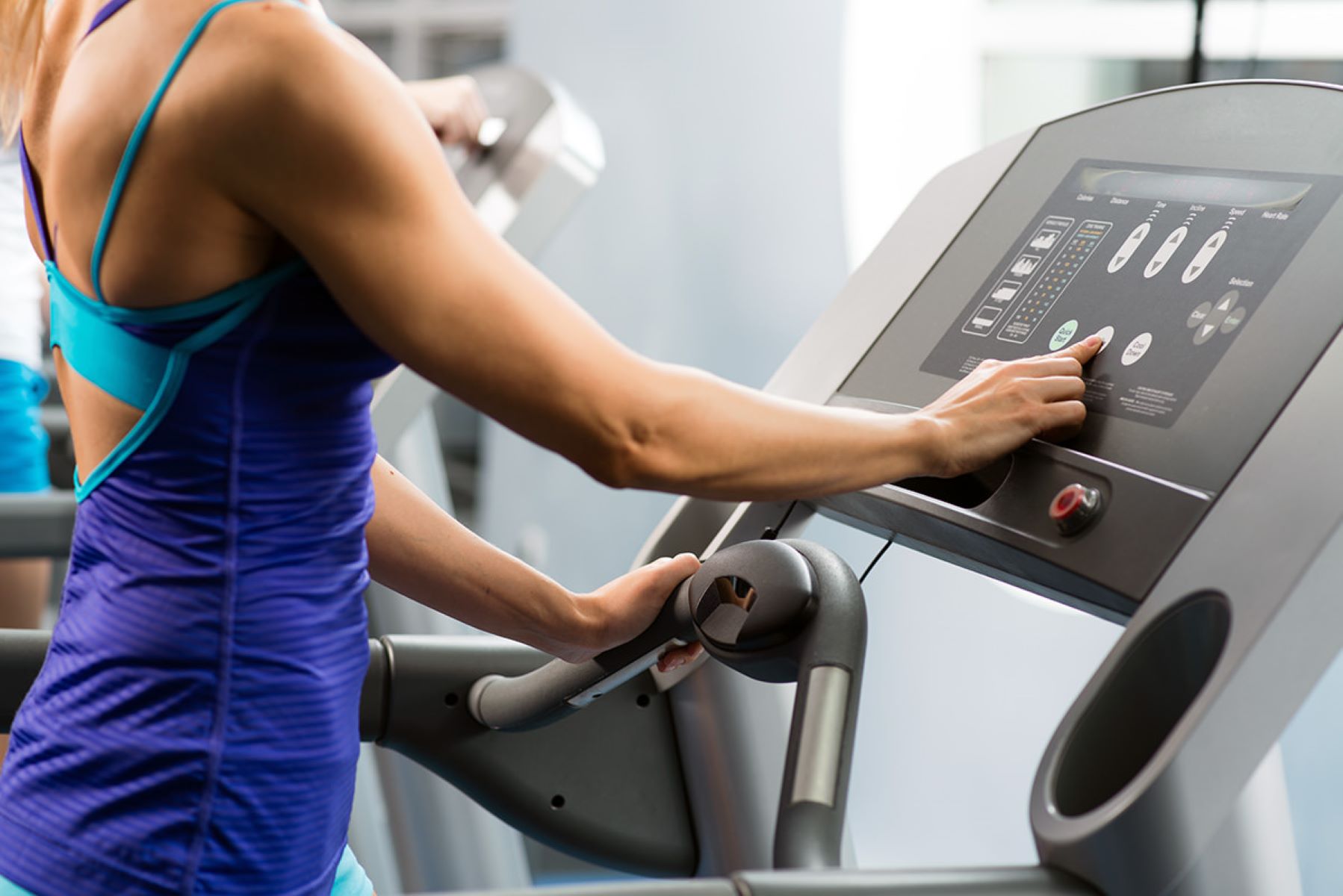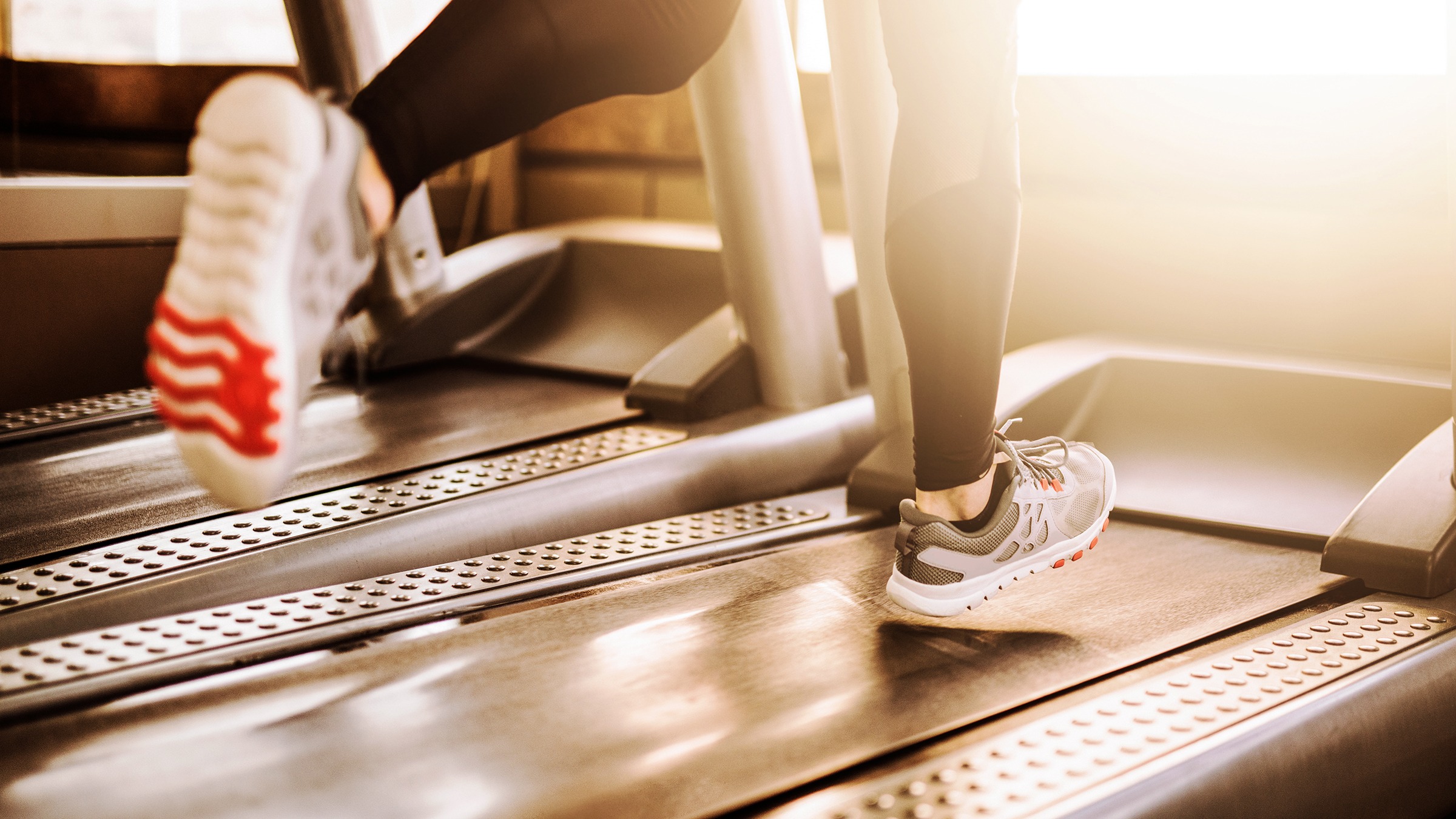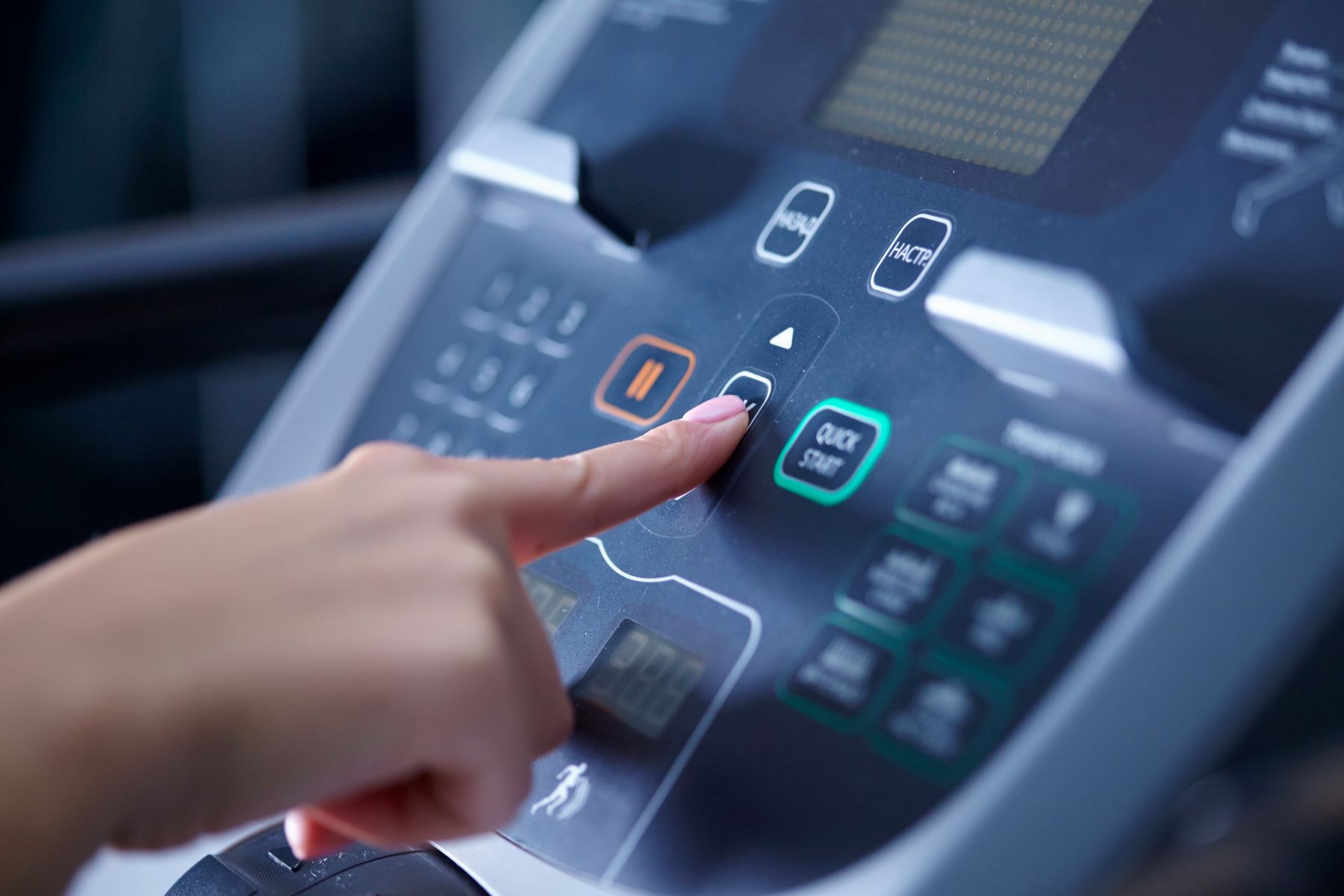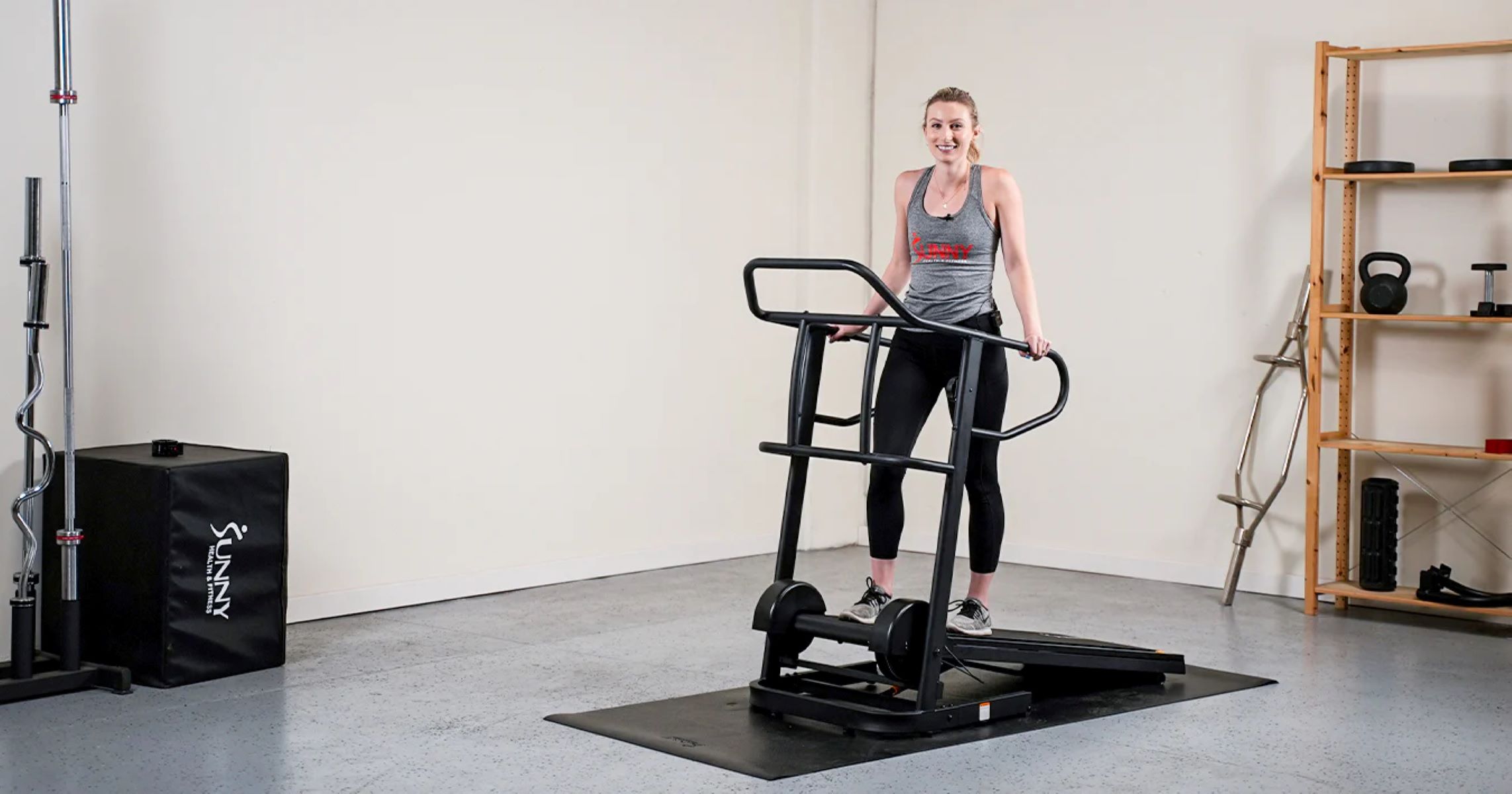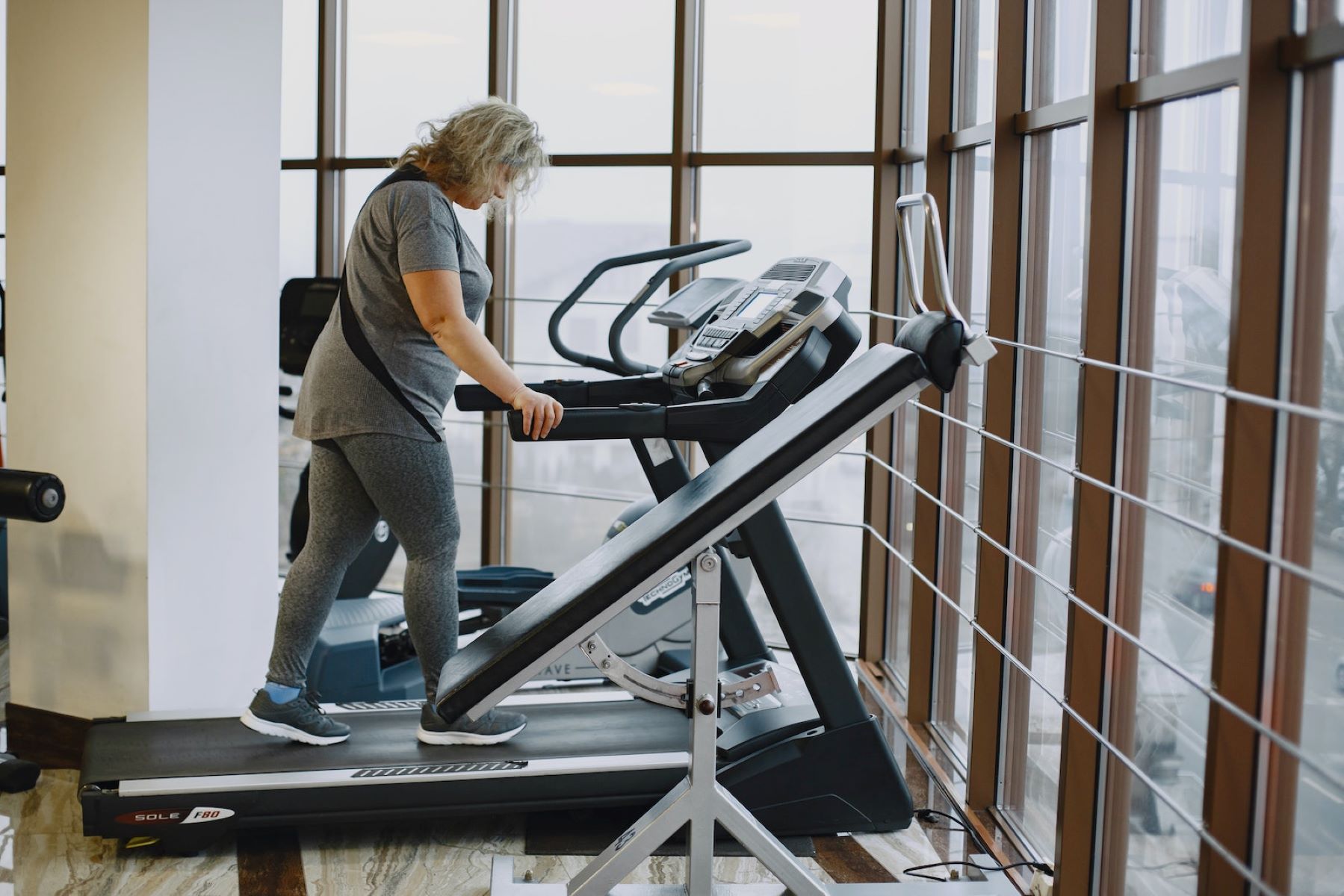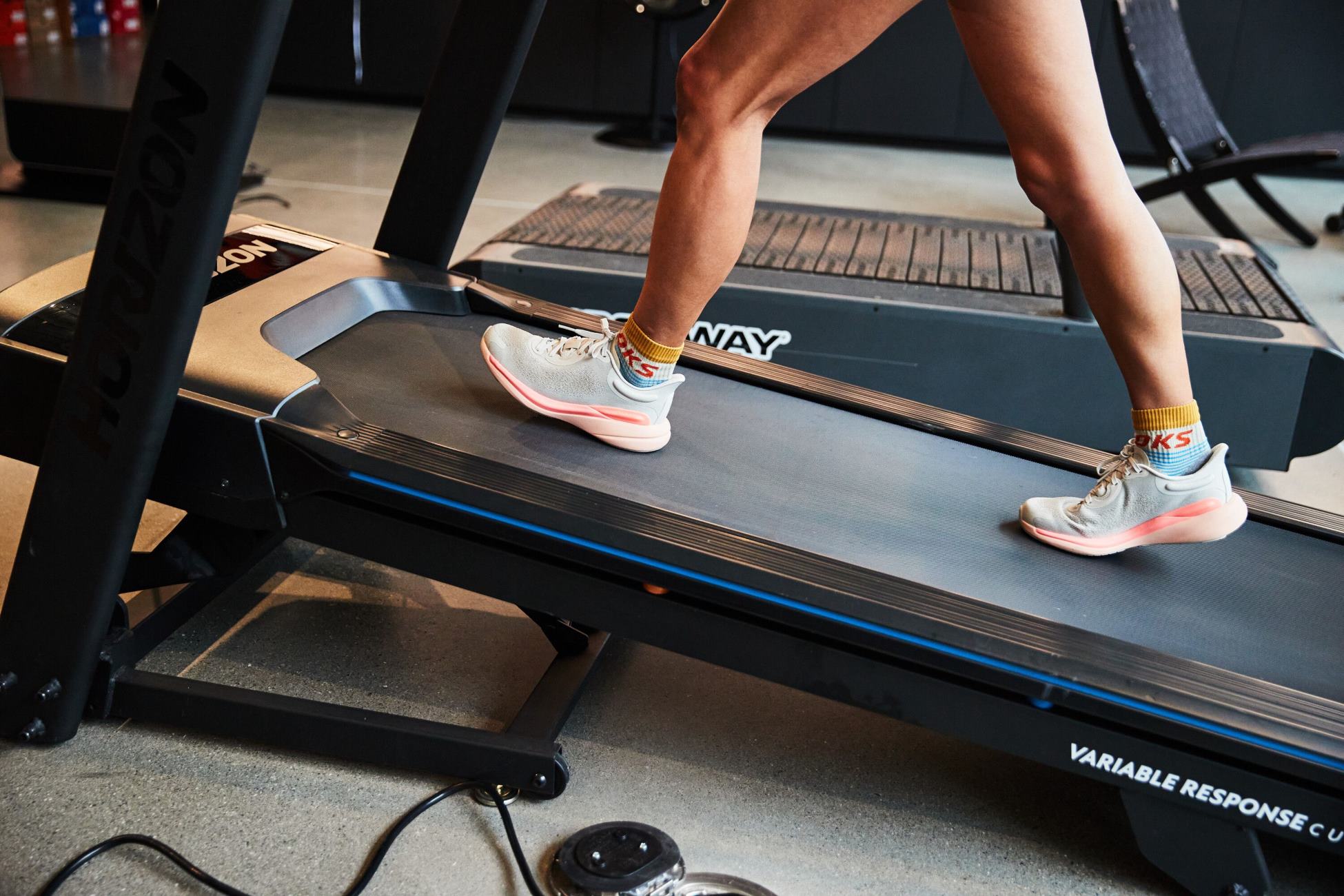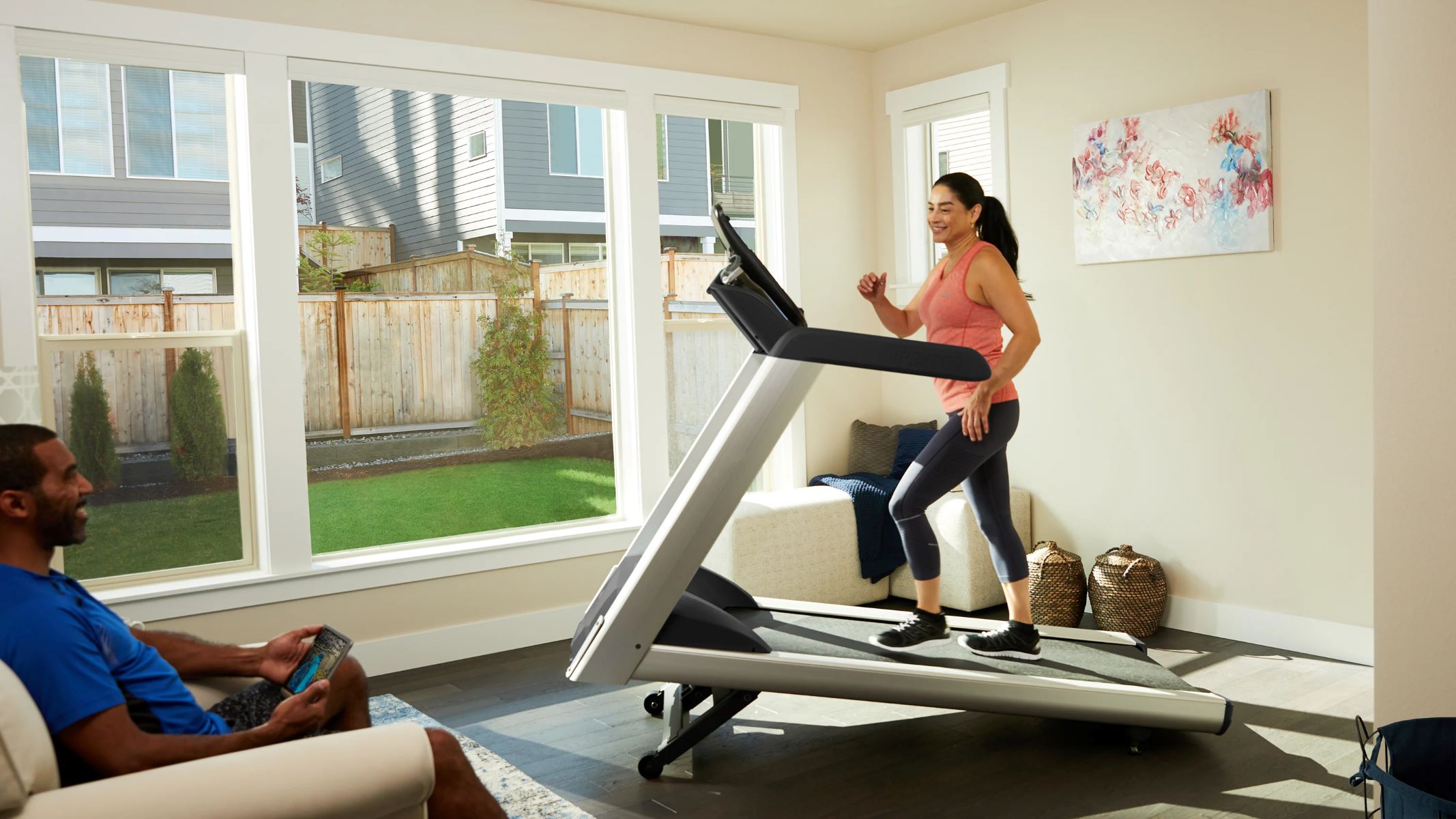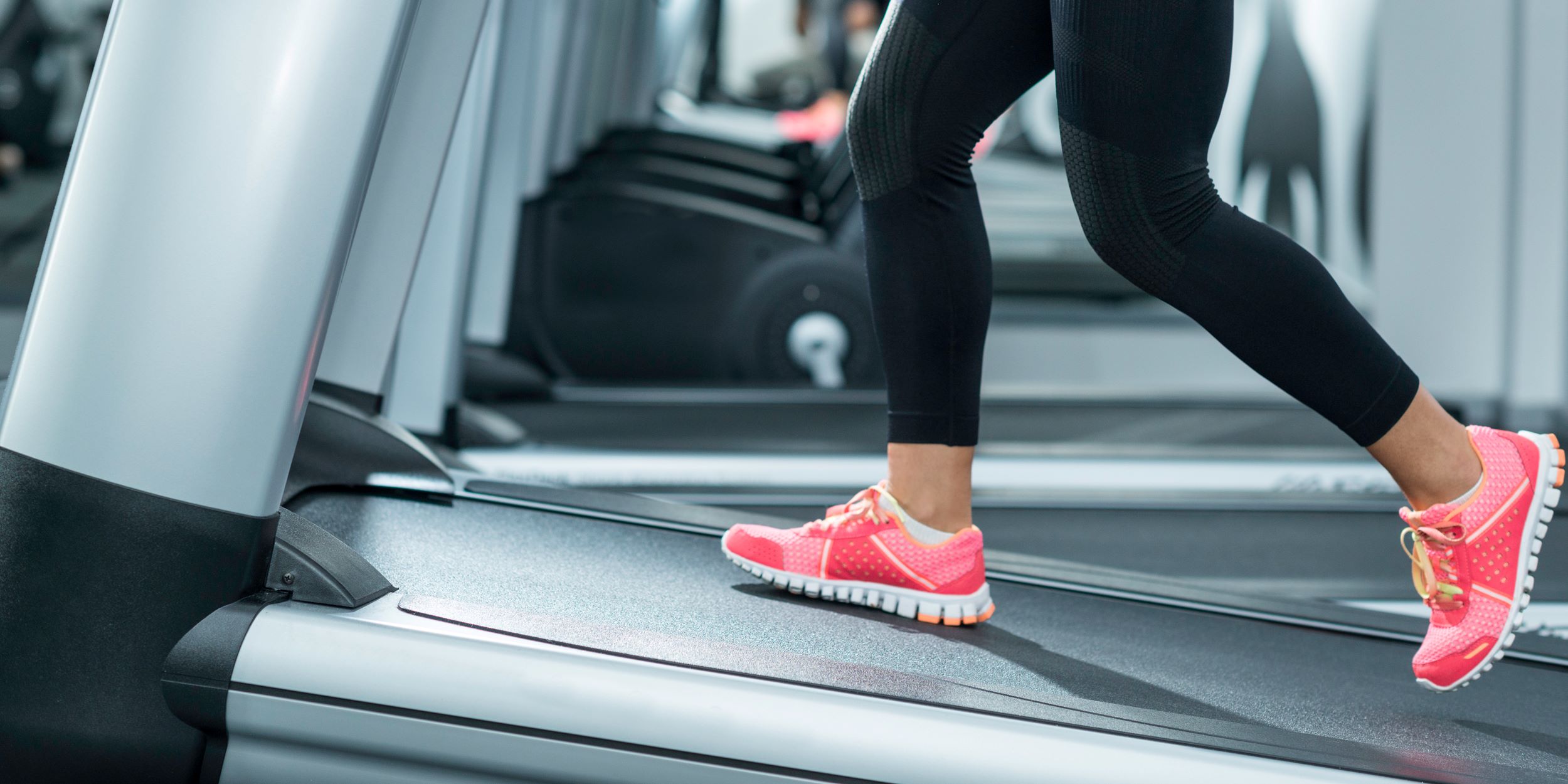

Featured
What Level Is 10 Incline On A Treadmill
Modified: January 2, 2024
Discover the level of incline on a treadmill that translates to 10% grade. Read our featured article to find out more!
Introduction
Welcome to the world of treadmills, where you have the power to control your workout intensity and simulate different terrains without leaving the comfort of your home or gym. If you’ve ever come across the term “incline” while using a treadmill, you might be wondering what it means and how it affects your workout experience.
Incline on a treadmill refers to the angle at which the running surface is elevated. It allows you to simulate running or walking uphill, giving you the opportunity to challenge your muscles and increase the intensity of your workout. Treadmills usually offer various incline levels, ranging from 0 to 15 or even higher, depending on the model.
In this article, we will specifically explore what a 10 incline means on a treadmill. We will delve into its significance, the effects it has on your body, and the benefits it can provide for your fitness journey. Whether you’re a seasoned runner looking for a new challenge or a beginner wanting to take your workouts to the next level, understanding the impact of a 10 incline on a treadmill is essential.
So, let’s lace up our shoes, hop on the treadmill, and discover the world of running at a 10 incline!
Understanding Incline Levels on a Treadmill
Before we delve into the specifics of a 10 incline on a treadmill, let’s first understand the concept of incline levels and how they are measured. Incline refers to the angle at which the running surface is elevated, simulating the experience of running or walking uphill. It adds an extra challenge to your workout by increasing the intensity and engaging different muscle groups.
Treadmills typically offer a range of incline levels, allowing you to adjust the elevation of the running surface to suit your fitness goals and preferences. These levels are usually measured in percentages or degrees. For example, a 0 incline represents a completely flat surface, while a 15 incline means the running surface is elevated at a 15-degree angle.
The incline levels on a treadmill can vary depending on the make and model. Some treadmills offer inclines up to 10 or 15, while others may go even higher. It’s important to note that not all treadmills have the same incline increments, so a 10 incline on one treadmill may feel slightly different on another.
When adjusting the incline on a treadmill, it’s essential to start gradually and listen to your body. If you’re new to incline training, beginning with lower incline levels and gradually increasing over time will help you build strength and endurance.
Understanding the incline levels on a treadmill is crucial for tailoring your workouts to your fitness goals. Whether you’re aiming for weight loss, endurance improvement, or muscle toning, manipulating the incline can add variety and challenge to your training routine.
Now that we have a better understanding of how incline levels are measured and their significance, let’s delve specifically into what a 10 incline means and the effects it can have on your running or walking workouts.
What Does 10 Incline Mean?
When you see a 10 incline on a treadmill, it means that the running surface is elevated at a 10-degree angle. This level of incline simulates a moderately steep hill, providing a challenging workout that targets different muscle groups and increases cardiovascular intensity.
Running or walking on a 10 incline requires more effort compared to exercising on a flat surface. The incline forces your muscles to work harder, particularly your calves, quadriceps, hamstrings, and glutes. It also engages your core muscles, helping improve stability and balance.
At a 10 incline, your cardiovascular system is also put to the test. The increased effort and intensity place greater demands on your heart and lungs, elevating your heart rate and increasing oxygen consumption. This can lead to improved cardiovascular fitness and endurance over time.
Running or walking on a 10 incline can also help burn more calories compared to exercising on a flat surface. The added resistance and increased muscle engagement require more energy expenditure, making it an effective option for weight loss or weight maintenance goals.
It’s important to note that running on a 10 incline may feel challenging, especially if you’re new to incline training. It’s okay to start at a lower incline and gradually work your way up as you build strength and endurance. Listening to your body and understanding your fitness level is crucial in ensuring a safe and effective workout experience.
Now that we know what a 10 incline on a treadmill means, let’s explore the effects of running or walking on this incline level and the benefits it can provide for your fitness journey.
Effects of Running on a 10 Incline
Running on a 10 incline on a treadmill brings a variety of effects and challenges to your workout routine. Let’s explore the impact it has on your body and the benefits it can provide:
- Increased Leg Strength: Running on a 10 incline engages your leg muscles more intensely than running on a flat surface. The incline targets your calves, hamstrings, quadriceps, and glutes, helping to strengthen and tone these muscle groups.
- Cardiovascular Intensity: Running uphill at a 10 incline elevates your heart rate and increases the demand on your cardiovascular system. This helps to improve your cardiovascular fitness, stamina, and endurance over time. It is a great way to challenge your cardiovascular system and push yourself to new limits.
- Calorie Burn: Running on a 10 incline increases the intensity of your workout, leading to a higher calorie burn. The added effort and muscle engagement result in more energy expenditure, making it an effective option for weight loss or weight maintenance goals.
- Improved Endurance: Training on a 10 incline requires more effort and endurance compared to running on a flat surface. By incorporating incline workouts into your routine, you can build greater stamina and endurance, allowing you to perform better in both uphill and flat running scenarios.
- Core Engagement: Running on a 10 incline forces you to engage your core muscles to maintain stability and balance. This helps strengthen your abs, obliques, and lower back muscles, enhancing your overall core strength and stability.
- Mental Challenge: Running at a 10 incline presents a mental challenge as well. It requires mental resilience and determination to push through the added difficulty. Overcoming this challenge can boost your confidence and mental toughness, helping you in other aspects of life.
It’s important to note that running on a 10 incline may not be suitable for everyone, especially if you have any existing injuries or health conditions. Consulting with a healthcare professional or fitness expert is recommended to ensure that incline running is safe and appropriate for your specific needs.
Now that we’ve explored the effects of running on a 10 incline, let’s discover the numerous benefits it can provide for your fitness journey.
Benefits of Running on a 10 Incline
Running on a 10 incline on a treadmill offers various benefits that can enhance your fitness journey. Let’s take a look at some of the key advantages:
- Increased Calorie Burn: Running on a 10 incline requires more energy and effort compared to exercising on a flat surface. This results in a higher calorie burn, making it an effective option for weight loss or weight maintenance goals.
- Improved Muscle Strength: The incline challenges different muscle groups, including the calves, quadriceps, hamstrings, and glutes. Running on a 10 incline can help to strengthen and tone these muscles, building overall lower body strength.
- Enhanced Cardiovascular Fitness: Running uphill at a 10 incline elevates your heart rate and increases the demand on your cardiovascular system. This promotes improved cardiovascular fitness, endurance, and stamina.
- Stimulated Metabolism: The increased intensity of running on a 10 incline can stimulate your metabolism, leading to a heightened calorie burn even after your workout session. This helps to support weight management and overall energy expenditure.
- Greater Mental Resilience: Conquering the challenge of running on a 10 incline requires mental strength and determination. It helps to build mental resilience and discipline, which can translate into other areas of your life.
- Variety and Challenge: Incorporating a 10 incline into your running routine adds variety and challenges your body in new ways. It helps to prevent workout plateau and keep you engaged and motivated to reach new fitness milestones.
- Improved Balance and Stability: Running on an incline engages your core muscles to maintain balance and stability. This helps to strengthen your core and improve overall balance, which is essential for maintaining proper form during running and other activities.
- Functional Strength: Running on a 10 incline simulates real-world conditions such as hilly terrains or outdoor running challenges. It helps to build functional strength, allowing you to tackle outdoor running or hiking activities with greater ease.
It’s important to listen to your body, gradually increase the incline level, and maintain proper form while running on a 10 incline. Incline training can be demanding, so it’s recommended to incorporate rest and recovery days into your routine to avoid overexertion and reduce the risk of injury.
With all these benefits in mind, running on a 10 incline is an excellent way to challenge yourself, increase the effectiveness of your workouts, and take your fitness to new heights.
Precautions and Safety Tips
While running on a 10 incline can be a beneficial and challenging workout, it’s important to prioritize safety and take necessary precautions. Here are some precautions and safety tips to keep in mind:
- Start Gradually: If you’re new to incline training, begin with lower incline levels and gradually increase the intensity over time. This allows your body to adapt and reduces the risk of muscle strains or injuries.
- Warm-up and Cool Down: Prior to running on a 10 incline, perform a thorough warm-up to get your muscles and joints ready for the workout. Similarly, don’t forget to cool down with stretching exercises to aid in muscle recovery and minimize potential soreness.
- Pay Attention to Form: Maintain proper running form, even on an incline. Keep your chest lifted, shoulders relaxed, and arms at a 90-degree angle. Focus on a mid-foot strike and avoid excessive leaning forward or backward to maintain balance.
- Stay Hydrated: Running on a 10 incline can be intense and may result in increased sweat and water loss. It’s important to stay hydrated by drinking water before, during, and after your workout to prevent dehydration.
- Listen to Your Body: Pay attention to how your body feels during the run. If you experience any pain or discomfort, consider decreasing the incline or taking a break. Pushing through pain can lead to injuries and setbacks in your fitness journey.
- Mix in Flat Surfaces: Incorporate running on flat surfaces into your routine as well to provide variety and reduce the strain on your muscles and joints. Alternating between incline training and flat running can help to balance the workload and prevent overuse injuries.
- Invest in Proper Footwear: Choose appropriate running shoes that provide adequate cushioning and support for your feet, especially when running on an incline. This helps to absorb impact and reduce the risk of foot and ankle injuries.
- Consult a Professional: If you have any underlying health conditions or concerns, it’s advisable to consult with a healthcare professional or a certified fitness trainer. They can provide personalized guidance and ensure that incline running is safe and appropriate for you.
Remember, safety should always be the utmost priority when engaging in any form of exercise. By following these precautions and safety tips, you can enjoy the benefits of running on a 10 incline while minimizing the risk of injury or strain.
Conclusion
Running on a 10 incline on a treadmill provides a challenging and effective workout that targets various muscle groups, increases cardiovascular intensity, and promotes overall fitness. Understanding the significance of a 10 incline and its effects on your body allows you to tailor your workouts and achieve your fitness goals.
By incorporating incline training into your routine, you can reap numerous benefits such as increased calorie burn, improved leg strength, enhanced cardiovascular fitness, and enhanced mental resilience. Running on a 10 incline also offers the opportunity to simulate real-world conditions and build functional strength.
However, it’s essential to take precautions and prioritize safety while running on a 10 incline. Starting gradually, maintaining proper form, staying hydrated, and listening to your body are crucial. Additionally, incorporating rest days and seeking professional guidance when necessary will help to prevent injuries and optimize your workout experience.
So, whether you’re a seasoned runner ready for a new challenge or a beginner looking to enhance your fitness routine, consider incorporating running on a 10 incline into your workouts. Embrace the physical and mental benefits it offers and enjoy the exhilaration of conquering new heights on the treadmill!
